Burnout from a 10-year career working in the nonprofit sector in Brooklyn led Jodi Connelly to a creative breakthrough in her art practice.
Connelly grew up in Raleigh, North Carolina, watching her graphic designer dad work at his drafting table and later earned a BFA in painting and drawing from East Carolina University. She
had always thought of herself as a drawer and painter until she decided to attend an artist’s residency at the Vermont Studio Center in Johnson, Vermont, where she allowed herself to break out of that creative box.
“I started putting salt on things, and I really wanted to lose control of my art practice,” Connelly says. She challenged herself to engage in curiosity, without focusing on the outcome.
She experimented with sumi ink and different salts, screen printing over the results. She also made small sculptures, casting tiny objects that she found while walking in the woods, a study of “unique objects that were just thoughts, like fragmented thoughts.”
Now, several years later, the interdisciplinary artist and Sierra College art teacher creates land-based and site-specific art that explores connections between place, the environment and people.
The residency also inspired Connelly to go to a graduate program, and during a studio visit with installation artist William Lanson, he recommended UC Davis as a good fit for her. He was right.
While earning an MFA in studio art at UC Davis, Connelly began to explore working with the earth, inspired by a trip to McLaughlin Reserve, a former mine site and natural reserve in Lake County managed by UC Davis.
A 4.5- by 9-foot charcoal drawing spans the wall of Connelly’s
studio at Verge Center for the Arts. The drawing is part of a
work-in-progress about the artist’s memory of the land at the
Mclaughlin Reserve, which burned in a fire in 2020. (Photo by
Marie-Elena Schembri)

Connelly’s land art thesis project, An Intervention in Space and Time (2017-2018), took place at the reserve where, over the course of a year, she cleared invasive plants and then planted native ones along a 4.5-foot-wide by 600-foot-long path.
Discussions with miners at the site, which is co-owned by the Homestake Mining Company as they work to decommission the former open-pit gold mine, led Connelly to another environmental project: Fractured River (2021), an installation which mapped the effects of hydraulic gold mining along the Yuba River on the landscape and agriculture of the Sacramento Valley.
Connelly’s 2022 installation project, Embodied Terrain, mapped the topography of Sacramento and surrounding regions at various elevation points using mud-coated cheesecloth suspended throughout the space.
Connelly is currently researching rammed earth — an eco-friendly and low-cost building material that is created by ramming a mixture of gravel, sand, soil and fine cement into a densely packed form — through a Seeding Creativity Grant from the City of Sacramento’s Office of Arts and Culture.
Connelly’s current research project, funded by the City of
Sacramento’s Office of Arts and Culture 2023 Seeding Creativity
Grant, involves researching rammed earth, an eco-friendly and
low-cost building material that is created by ramming a mixture
of gravel, sand, soil and fine cement into a densely packed form.
(Photo courtesy of Muzi Rowe)

She has taught three community workshops on her research, which includes testing various local soils and exploring techniques, and hopes to inspire people to look at this natural yet labor-intensive building material as an option for sitting areas, fire pits or other structures in community spaces. Much of her knowledge on the subject comes from books, namely native Californian earth builder David Easton’s 1982 book, “The Rammed Earth House.” The rest is earned through workshops, rigorous soil testing and trial and error: one rain-sodden block disintegrated, but two others have survived the test of weather.
Connelly has plans to eventually build a rammed earth structure at the reserve, using soil she has already identified from a nearby road construction dumping site, which she says is “like the bombproof rammed earth mix.”
“So we saved that pile, and we’re going to use it to install something on the land that will be of service and also beautiful,” says Connelly.
(Photo by Marie-Elena Schembri)

How do you describe yourself as an artist?
I describe myself as an interdisciplinary artist who makes land-based or site-specific work. But I also do installations. I guess, in a broad sense, I would say that (I am) an interdisciplinary artist who focuses on themes of the environment, and sometimes that’s site-specific work, and sometimes it is bringing the site into a venue.
If you had a favorite piece or exhibition of your work, what is it, and why?
My favorite piece to date was this work that I did for coordinates with the Embodied Terrain because it was so simple. I was able to really distill an idea. And I think I have a tendency to kind of go over the top, and I have to edit a lot later. But that idea felt very clean.
Can you tell me about that project? These forms are very interesting to me. They make me think of trees.
I had been toying with this idea of draping these cloths with mud for a while. And I hadn’t really kind of developed a reason, but the name of the show was Coordinates. And so what I did was I sort of mapped Sacramento and a ring around Sacramento that went up to the foothills and then to the coast range. And then each one of these was a certain altitude of a certain point on the map. And so when they’re all assembled together, the intention was to create a topography. But it was also kind of this experience of moving through the landscape and sort of seeing how horizons will change and intersect as you move through the landscape. But I also really wanted the viewer to have this sort of bodily confrontation with the ground, because usually when we move through the world, we’re walking on the surface of the ground, and we’re looking down at it, and it’s very rare that you’re just faced with it.
Connelly’s 2022 installation, Embodied Terrain, mapped the
topography of Sacramento and surrounding regions at various
elevation points. (Photo courtesy of Muzi Rowe)

The taller ones are very kind of like, of the body. And then when they were all arranged, they also kind of looked like a forest. And I think all of those reads are appropriate. My intention was to kind of create this topographical map that also functioned as a landscape you could walk through. And then the perimeter of the space was filled with soil. And so the soils were all taken from places that I’ve lived in the region. So the soil’s from a farm that I lived on in Davis, or outside of Davis, and then the soils that were in the perimeter were from our new neighborhood.
Where do you go for inspiration for your art projects?
I go to nature. I go up to the reserve when I can. That’s kind of like a second home for me. I go to the foothills or the mountains, the Yuba River. I think anywhere where I can just be still and quiet. I feel most like myself when I’m in the woods or in a grassy field or walking somewhere like that. Plants are my friends.
How do you see your art impacting the community on a local or even broader scale?
I think one of the things I’ve noticed is that because my work focuses on the environment, it attracts a lot of scientists or geologists or people who work with the earth. During Sac Open Studios, I had a woman come in and she was like, “Oh.” And I was like, “Oh yeah, those are soil tests.” She’s like, “Yeah, we use ‘em all the time in my field.” She was an earth scientist, geologist kind of person. She’s like, “Yeah, that’s how you see the basic composition of a soil.” And that was an entry point. And so I think that on one level, (it) could engage the science community with the arts community, which is something I’m very interested in, that dialogue between research and artistic research. And I think the other way is that whether we’re outdoors or not, everyone connects to nature in some way. And so it’s an entry point. It kind of draws people in, and then you start looking at it and you think, “Oh, there’s some deeper issues here.”
Soil samples sit on a shelf in Connelly’s studio at Verge Center
for the Arts. (Photo by Marie-Elena Schembri)

Are you working on anything new that we haven’t talked about?
The newest thing, which isn’t that new, is this paper tree problem that I’ve been trying to solve for five years. I started making them in a residency in upstate New York and then thought they were dumb and put them away. And then I think, I’m like, “Oh, wait, that’s kind of interesting.” And then I get them back out, and I work on them some more, and then I decide they’re dumb and put them back. And so now I’m finally like, “No, you are going to resolve this project.” And so then this drawing kind of happened, which I’m thinking about the reserve … but I’m kind of experimenting with it. I go back to drawing, but I’m not sure what I’m doing.
And so I kind of got this drawing out that I had been working on a while back and just couldn’t resolve and decided that I like it with these trees. And so I’m kind of making work about the fire. … It’s kind of about the work I did on the line, and then the piece burned up in 2020. The whole site burned. I have a picture of it on my Instagram. And then I went out, and it was just this charred blackness, but you could see the line really clearly because nothing had been growing there, because I had cleared it so much. … So this is kind of an experiment. I’ve always made drawings from life or images or sketches of actual things, and really trying to create something that is sort of my memory of that place before and after, and all these different impressions I have of that land that I’ve worked on so much. … So I’m trying to do this from memory or how I remember it. And I want to make a series of them.
What do you think about the art scene in Sacramento and how your art fits into that scene?
Sacramento is an interesting art community in that I think there are some really, really great artists who are in this community. I think I see in Sacramento, as a whole, the overarching art scene is that we don’t really have the infrastructure to support the arts. We have one museum, and we have some schools with art departments. … But I find myself craving a more open and critical dialogue, and I think there needs to be, and I get that in my own practice. I have people in my community that I was in graduate school with, and we can really dig in and go deep, but I think sometimes there’s not enough. There just aren’t enough venues really in Sacramento. Some of the venues that we’ve had closed during the pandemic, and there are some really great things happening in Sacramento, but I think we need more institutional support.
Do you think that the Seeding Creativity grants was a step in the right direction with that?
Yeah, absolutely. I think in terms of policy, people are really trying hard to support the arts, and I think this is kind of a problem in any mid-size city. … But one of the things I think that’s great about the Sacramento arts scene is that possibilities are open. We’re not dealing with Oakland prices or Bay Area prices. So you have groups like the Faith McKinnie Gallery, and she has a place on 16th Street right now, and she’s curating gorgeous work by mostly artists of color and some overlooked artists. And she’s really bringing some of that critical dialogue and some of that — a different artistic viewpoint that I think we’re all really craving. And so I think that’s really positive for our community.
And then TGTG, which is in North Sacramento, that’s called the Garage on the Grove. They provide a garage they converted into a gallery, and it’s an experimental art space. And they’re the ones that kind of got me to really push Fractured River, which is where that was installed. And they actually let me carve the dry wall of their space, and then they had to fix all the walls after, take them down and put new ones up.
So I think even though we don’t have a ton of infrastructure, and maybe there are a lot of loose ends floating around, I think, in the art scene; but because it’s kind of wide open, there are also these really interesting pockets of projects and opportunities. So it’s kind of a mixed bag in a lot of ways. And Sacramento, for me, has been really good to me as an artist. I have gotten so much support from the community, and I had a residency here at Verge, and obviously this is a super valuable asset to our community. … It’s definitely gotten better, but a lot of people leave for bigger things, and I think that’s kind of typical. But I also think because it’s relatively affordable, people are starting to consider this home. And there are some people in the arts community that are really uplifting, I think, what is happening.
Edited for length and clarity.
Stay up to date on art and culture in the Capital Region: Follow @comstocksmag on Instagram!
Recommended For You
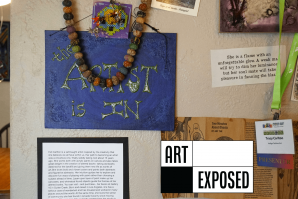
Art Exposed: Tracy ‘Indi’ Carlton
Meet the Amador County artist who traded in a 21-year nonprofit career to become a creative expression coach
Tracy Carlton took an unconventional path to her art career, launching a as a creative expression coach and teacher last year following a 21-year career at First 5 Amador, the Amador County branch of the statewide nonprofit commission dedicated to improving early childhood development.
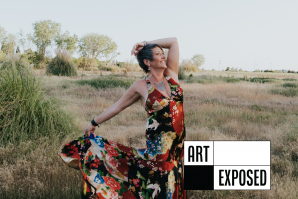
Art Exposed: Carrie Hennessey
The vocalist, instructor and writer emphasizes positive energy and risk-taking, whether onstage or coaching others
Carrie Hennessey has been known to belt out a tune while walking her dogs outside of her South Natomas home, but the neighbors in this otherwise quiet neighborhood don’t seem to mind. She picked up the moniker “Opera Mom” while her two children (now in their 20s) were in elementary school, but there is a lot more to her.
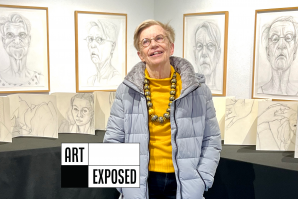
Art Exposed: Betty Nelsen
On the art of how to look in the mirror
In revisiting her early self-portraits, Betty Nelsen has zeroed in on the strongest elements, cropping the drawings into pages that will go into a series of handmade books.
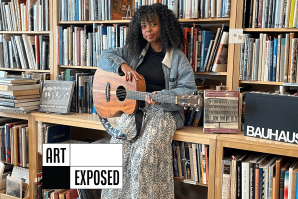
Art Exposed: Beti Masenqo
The musician-singer-songwriter blends folk and rock with the Ethiopian songs of her childhood
When she performs, singer and songwriter Beti Masenqo leaves this earthly plane in a way that seems entirely effortless.
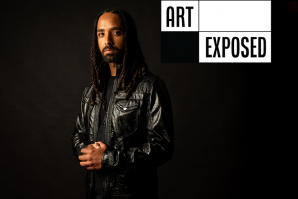
Art Exposed: Unity Lewis
A curator, artist and musician carries the legacy of his grandmother’s groundbreaking work documenting the Black experience
Unity Lewis recently curated a series at Crocker Art Museum that brought his grandmother’s book into the three-dimensional world by pairing works of artists from previous generations with their modern counterparts who will carry the torch.
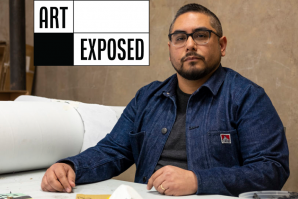
Art Exposed: Vincent Pacheco
A graphic artist blurs art and design and plays with the cultural language of piñatas
The artist builds piñatas in various forms of cultural artifacts. Each is a temporary monument to family, identity and cultural heritage.



